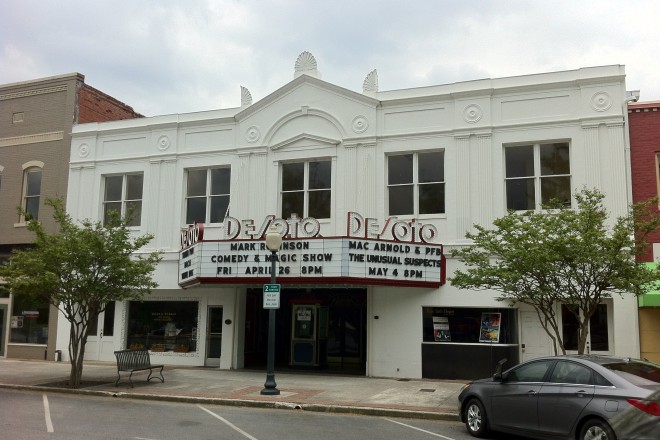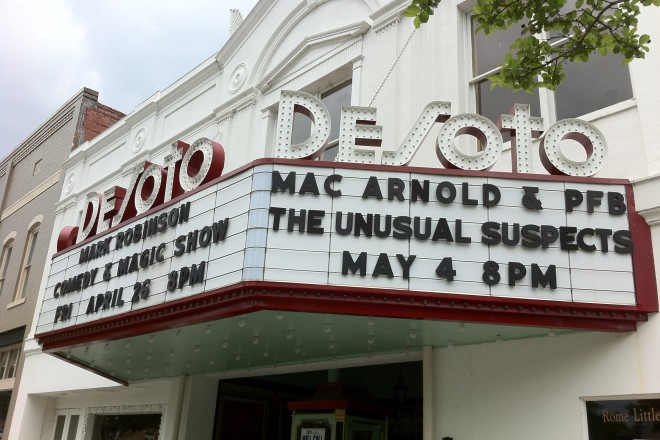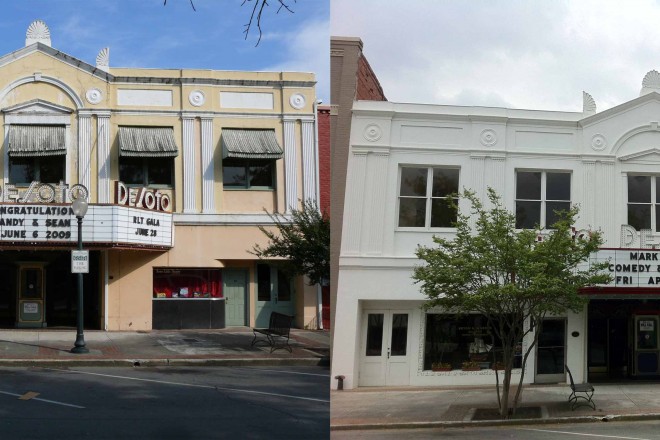MENU 800.444.1834
Visitor Guide
Historic DeSoto Theatre
Performances
Desoto Theatre Events
Rome Little Theatre Events
In early 1928 O. C. Lam, the owner of Lam Amusement Company, laid plans to construct a new movie theatre in downtown Rome, Georgia. Lam wanted to build a movie palace — a luxurious theatre modeled after New York’s Roxy. Lam purchased a section of prime real estate on the main street of downtown Rome for $50,000.
The building’s exterior and Georgian interior stylishly housed a number of recent movie palace innovations. Designed as a “talkie” theatre, it the first venue in the South to be designed and built for sound pictures. Rome’s new house boasted a Vitaphone sound system. And, the theatre was heated and cooled by an innovative blower-fan air conditioning and tubular boiler system. Additionally, the theatre was equipped with state of the art fire safety equipment. Fitted with many exits, the theatre could be emptied in two minutes.
Lam named his new movie palace for Hernando DeSoto, who was thought by many historians to have passed through the area that is now Rome in 1540. The DeSoto was completed at a cost of $110,000 and opened in August of 1929. At that time, the theatre seated well over 1000 patrons, making it one of the seven largest movie venues in Georgia at the time. The theatre was an instant success and the pride of Rome. The DeSoto was one of the main sources of entertainment for Northwest Georgia and Northeast Alabama for the next fifty years.
The Rome Little Theatre |
|
|
In 1982, The DeSoto closed as a movie theatre, but soon reopened as the venue for Rome’s local amateur theatre group. Now seating 498 patrons, the Rome Little Theatre has staged dozens of plays in the 23 years it owned the DeSoto, and the theatre is one of the venues for the annual Rome International Film Festival. The DeSoto continues to be a source of entertainment in downtown Rome. The DeSoto still retains its Art-Deco marquee, French mirrored entrance hall, and Georgian interior design. RLT deeded the facility to the Historic DeSoto Theatre Foundation in order to preserve and protect the building. |
|




